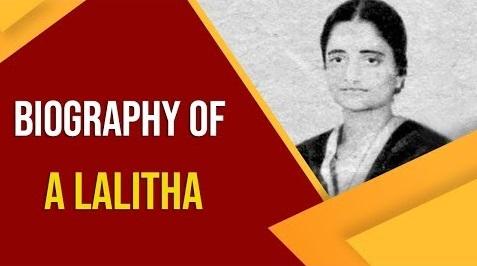Table of Contents
EARLY LIFE
- Lalitha was born on August 27, 1919 in Chennai, into a middle-class family
- Lalitha was married in 1934, when she was fifteen. Her studies continued even after marriage, but came to a stop after receiving the Secondary School Leaving Certificate (SSLC or Class X). Her daughter Syamala was born in 1937 and was only four months old when Lalitha’s husband passed away.
- Lalitha applied to CEG in 1939, an all-male institution at the time.It was her good fortune that her father, Pappu Subba Rao, was Professor of Electrical Engineering there.
- The addition of two more women to CEG in 1940 was quite welcome. Both Leelamma George and Teresa joined CEG to study civil engineering in 1940. All three of them would graduate in 1943, the first batch of women to do so from CEG. Lalitha’s Honors degree in Electrical Engineering was awarded in February of 1944.
GRADUATE
- The final requirement for the degree was practical training. Lalitha completed her one year apprenticeship in Jamalpur Railway Workshop, which was a major repair and overhaul facility.
- In 1944, Lalitha joined the Central Standards Organization of India, Simla, as an engineering assistant. She stayed in the job until December 1946. She also took the Graduateship Exam of the Institution of Electrical Engineers, London, UK.
ENGINEERING
- At the instigation of her father, Lalitha left her job in order to help him with his research. joined the Associated Electrical Industries (AEI) . The post was to be in Calcutta in 1948.
- In AEI, Lalitha worked in the engineering department, and sales division, Calcutta branch.
- Being a widow with a child, Lalitha’s work was confined to providing the expertise and assistance to those who were above her in seniority and she did this with great efficiency and satisfaction.
FIRST FEMALE ENGINEER
- In 1953, the Council of the Institution of Electrical Engineers (IEE), London elected her to be an associate member and in 1966 she became a full member.
- In 1964, for instance, she was invited to the first International Conference of Women Engineers and Scientists (ICWES) in New York.
- Upon her return, a number of popular women’s magazines in India such as Femina and Eve’s Weekly interviewed Lalitha in which she was able to give voice to her belief that women should be equal participants in the field of engineering.
BRAVEHEART
- Lalitha became a full member of the Women’s Engineering Society of London in 1965, and agreed to act as their representative in India for the Second International Conference of Women Engineers & Scientists, held in Cambridge, England in July 1967.
- Her sister brought up Lalitha’s daughter along with her own son so that Lalitha can focus on her studies. Lalitha lived over 35 years with her sister in law in the same house in Calcutta.
LAST DAYS
- Syamala(Dughter of lalitha), who is married to a scientist has degrees in science and education. Her children are scientists as well.
- Lalitha supported the view that widows should remarry, though she herself remained one since she felt committed to her daughter.
- She retired from working in 1977. Post retirement found her travelling in the Southern India with her sister. In 1979, when she was only 60 years old, she was struck with a brain aneurysm and passed away after a couple of weeks on October 12.






















 WhatsApp
WhatsApp